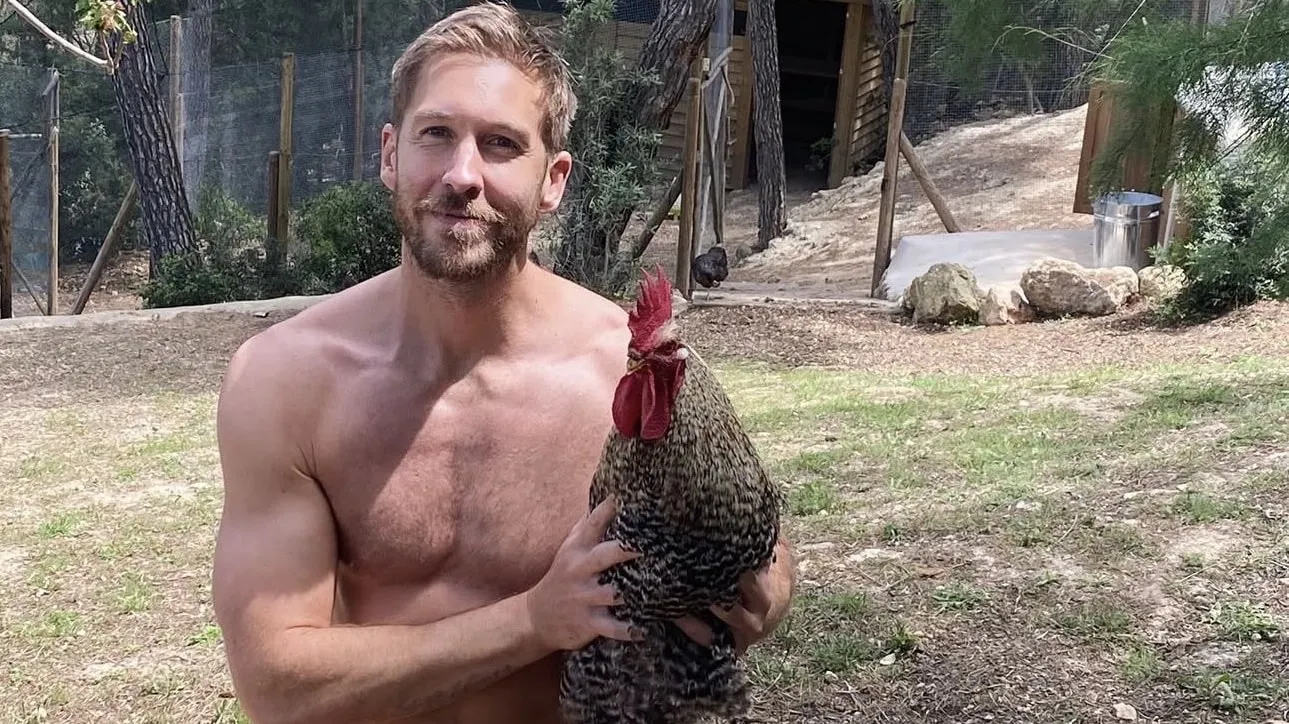January 5, 2011
Hawaiian Kings, Part I: Sex, Scandal, and Sacred Harmony
Mickey Weems READ TIME: 7 MIN.
I've just spent two weeks in Honolulu. Very little of that time was on the beach or at Hula's, the popular Gay bar in Waikiki. Most of my waking hours were in the Bernice Pauahi Bishop Museum so I could learn about Hawaiian history, especially its monarchs.
Hawai'i is not at all like any other state in the Union. It is the only state that was once a kingdom, the only one with a royal palace, the only one with two official languages (Hawaiian and English), the first with an ninety-percent-plus literacy rate (achieved in the 1830s), the first to have a high school west of the Rockies, the only with fresh lava most of the time. It is the only state with three interstate highways that go to no other state (and no other island than O'ahu). It has the longest name for a state fish (humuhumunukunukuapua'a). Sane restrictions on gun ownership means there is less chance of getting shot in Hawai'i than any other state, and drivers are polite to the point that they drive native New Yorkers crazy.
Honolulu is much like Toronto. That is, if Toronto were by the ocean and tropical, and if every other block had its own Buddhist/Shinto temple.
The Bishop Museum is a beautiful institution, with impressive displays of Hawaiian artifacts and culture that take days to absorb. I recommend all who go to Honolulu to visit this exceptional place.
The history of Hawaiian government is likewise exceptional. When King Kamehameha I unified the islands, Hawai'i entered the world scene as a tiny nation in an ocean filled with hungry sharks ready to devour it. Monarchs from Kamehameha onward had to play their powerful neighbors, such as Great Britain, France, Japan, Russia, and the USA, against each other in order to survive. Hawaii's ruling elite also realized that if they were seen as barbaric, they would cease to exist as a nation, so they wove rapid changes into the social fabric of their people.
To understand the severity of changes that Hawaiians underwent, you must read between the lines. This is especially true with sexual politics that were so important to change and resistance. Almost nothing in the Bishop Museum deals overtly with such potentially scandalous issues- I had to dig deeper to get the details, much of it from private conversations with Hawaiian scholars in addition to the Bishop Museum's awesome displays.
The Europeanization of Hawai'i began with Kamehameha, and accelerated by one of his wives when she appeared dressed in men's royal clothing. At the death of Kamehameha, a strong-willed queen named Ka'ahumanu wore the long yellow-feathered cloak and feathered helmet of her dead husband, and announced to his eldest son (Liholiho, Kamehameha II) that his father wanted her to be co-ruler.
Ka'ahumanu would end many of the restrictions based on class and gender that tightly bound Hawaiians, harsh rules that often called for the death penalty when broken. A year later, she would welcome Christian missionaries who would impose restrictions of their own, harsh rules that often called for eternal damnation for those who broke them. Liholiho was officially the new king, but Ka'ahumanu often called the shots in her role as Kuhina Nui or co-executor, an office that was created especially for her. Ka'ahumanu I was succeeded by Elizabeth Kina'u and Miriam Kekauluohi who took the titles of Ka'ahumanu II and Ka'ahumanu III. These women were also strident Christians, and they sought to make the religion of American missionaries the law of the land.
When Kamehameha II died, his brother Kauikeaouli became Kamehameha III. As with monarchies around the world, the power of the Hawaiian ruling class was restricted to certain bloodlines. But Hawaiian notions of royalty had a twist- the greatest reverence was reserved for the results of sexual unions between close kinfolk. Such unions were seen as a kind of sacred purity that rendered the offspring godlike.
Kauikeaouli had been prepared his entire life to mate with his sister, Nahi'ena'ena. This was by no means surprising since his brother Liholiho married two of their half-sisters, Kamamalu and Kina'u.
But Nahi'ena'ena's mother (herself the result of a brother-sister union) called her daughter to her deathbed and made the girl promise to be a good Christian. This caused massive anxiety for both Kauikeaouli and Nahi'ena'ena. They loved each other dearly, but the conflict between ancient tradition and newfound faith led them to resist mating until they revolted against Christian restrictions and slept with each other, missionaries be damned. The child of that union died only hours after being born, and Nahi'ena'ena died a couple of months thereafter.
The largest single piece of Hawaiian featherwork in existence is the bright yellow pa'u or ceremonial skirt made for Nahi'ena'ena as a symbol of her sacred status and a subtle nod to her union with her brother. It was twenty feet by 2.5 feet, the length of a sari. After her death, it was cut in half and put together into a ten feet by five feet rectangle. The modified pa'u covered the coffin of her brother after he died, and is now kept safe in the Bishop Museum.
Kauikeaouli was married in a Christian ceremony to Kalama, a move that permanently ended the policy of multiple wives for Hawaiian kings.
This did not mean, however, that the King felt bound to Christian notions of marital fidelity. Such behavior is not unusual for kings everywhere, Christian or otherwise, but there is once again a twist.
In addition to close-kin sexual unions and liaisons with other women outside of official wives, Hawaiian royalty traditionally enjoyed access to homosexual pleasures with no censure. Kings had their aikane, intimate male friends that might also be lovers. Kauikeaouli fell in love with a Christian convert, a good-looking Tahitian-Hawaiian man named Kaomi who became his aikane. Kauikeaouli was so smitten with Kaomi that he sought to make him co-ruler with rank higher than the royal women appointed Kuhina Nui. The handsome Kaomi died under shady circumstances before Kauikeaouli could elevate him.
Keep in mind that many Hawaiians of royal blood enthusiastically embraced Christianity, an important move that gained Hawai'i legitimacy as an independent kingdom in the eyes of the European and American powers. Along with Christianity came literacy, which Hawaiians picked up with remarkable speed as soon as their language adopted the Latin alphabet from American missionaries. The new Christian literati were keenly aware of how outsiders saw their people, especially their king. Kauikeaouli's affection for hot guys was not looked upon favorably, and the idea that a man of low rank such as Kaomi would be co-ruler was unthinkable. No doubt they also saw Kaomi's role as the King's sexual partner a betrayal of Kaomi's Christian values as well.
Nevertheless, Kauikeaouli promoted another male lover, John Young II, as the next Kuhina Nui until the daughter of Ka'ahumanu III was old enough to become Ka'ahumanu IV.
John Young II was better known as Keoniana (the Hawaiian spelling of his name). A beautiful man in both physique and face, Keoniana was the son of John Young, an American sailor of Scottish descent who was the aikane of Kamehameha I. It was John Young who advised Kamehameha I on military tactics involving guns and cannon rather than the traditional war clubs, slings and spears. Kanehameha rewarded Young with wealth, status, and a wife of royal blood who became the mother of Keoniana.
As a man of two worlds, Keoniana was fluent in both Hawaiian and English. His Scottish ancestry blended well with the royal blood of his Hawaiian mother, resulting in a ravishingly handsome stud. Nevertheless, Keoniana fell out of favor (and was almost executed) when the King found him sleeping with the Christian Queen Kalama. The King eventually forgave him and appointed him as Kuhina Nui, permanently changing the office from that of exclusively female co-ruler to that of a trusted counselor.
Keep in mind that all these events happened when the Hawaiian people were assaulted by wave after wave of illnesses. From the time of Kamehameha I to Kamehameha III, the population had been cut in half. As Kamehameha III, Kauikeaouli saw further reduction to a third. His own royal children died before reaching adulthood.
Despite turmoil in his personal life and the lives of his people, Kauikeaouli did much for the Hawaiian Kingdom. He formally ended the status of the monarch as divine, and instituted legal reforms, including capitalist-based land ownership, a controversial move that Europeans and Americans insisted be done as a sign of a civilized society. He was the first monarch to officially marry only one wife according to Christian values, once again protecting his people from the stigma of barbarianism and conquest of Hawai'i by outsiders.
When his kingdom was seized by British forces, he successfully convinced the British Crown to recognize Hawaiian sovereignty, and was restored to his throne by order of Queen Victoria herself. The royal houses of Hawai'i and Great Britain would continue to enjoy a close relationship. Victoria would be the godmother of Albert, son of Queen Emma and Kamehameha IV.
Kauikeaouli also authored the motto for the Hawaiian Kingdom that is now the motto for the State of Hawai'i: Ua Mau Ke Ea O Ka 'Aina I Ka Pono, which is translated as "The Life of the Land Is Perpetuated in Righteousness." But the standard translation has a bit of Christian missionary flair to it. The word "pono," which is translated as "righteousness," may also be translated as "sacred harmony," the notion that things are good when they are in balance with each other.
When we look at the challenges faced by Kamehameha III in his lifetime, we see him struggling to keep a sense of balance within himself, his family and for his people.
Overall, he succeeded.
Dr. Mickey Weems is a folklorist, anthropologist and scholar of religion/sexuality studies. He has just published The Fierce Tribe, a book combining intellectual insight about Circuit parties with pictures of Circuit hotties. Mickey and his husband Kevin Mason are coordinators for Qualia, a not-for-profit conference and festival dedicated to Gay folklife. Dr. Weems may be reached at [email protected]







